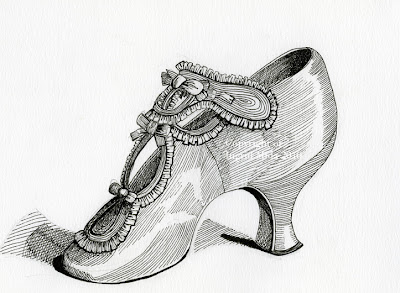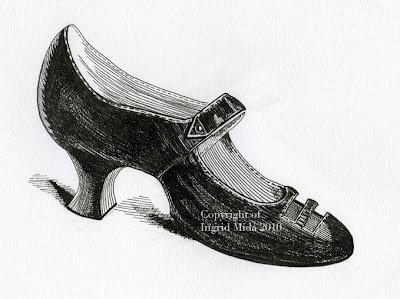This exquisite embroidered French evening mantle c.1891 graces the cover of the sumptuous book "
Fashioning fashion: European Dress in Detail 1700-1915
". Published in conjunction with the inaugural exhibition by the same name, this catalogue presents nearly two hundred items from the
Los Angeles County Museum of Art's recently acquired European costume collection. The book is filled with glorious colour photos of the costumes along with numerous detail photos of the luxurious textiles, exacting tailoring techniques, and lush trimmings used during this period.
Curated by Sharon S. Takeda and Kaye D. Spilker of
LACMA, the
Fashioning fashion exhibition presents over 160 examples of European fashionable dress, undergarments, and accessories covering the period 1700-1915. This collection of clothing and accessories was acquired several years ago and many items are being exhibited for the first time. The exhibition is organized into four thematic sections—Timeline, Textiles, Tailoring, and Trim.
Timeline presents a chronological look at both men's and women's fashions. The women’s visual timeline is illustrated with dresses in various shades of white to focus attention on the evolving fashionable silhouette. The men’s timeline begins with luxurious and colorful examples of eighteenth-century aristocratic men's dress and concludes with a subdued 1911 pinstripe suit, a style that has remained relatively unchanged for a century.
 |
Installation view, Fashioning Fashion: European Dress in Detail, 1700-1915.
Photo: © 2010 Museum Associates/LACMA. |
Textiles are often the most expensive component of fashion and this section presents an assortment of textiles—from silk to cotton, gauze to velvet, plain to printed. The choice of fabric - medium, weight, colour and pattern - all affect how fashion is fashioned.
Tailoring explores the manipulation of textiles through cutting, stitching, and padding in order to create the idealized shape or fashionable silhouette of each era. With the advancement of tailoring tools and techniques, styles were able to change in dramatic ways, accentuating or minimizing different body parts.
Trim celebrates the artistry of embroiderers, quilters, and lace makers, especially in the highly embellished garments from the eighteenth-century
Fashioning Fashion examines the transformation of fashion over a period of more than two centuries, and adds contextual commentary to show how political events, technical inventions, and global trade profoundly affected style. This is one of the three exhibitions opening
LACMA’s new Lynda and Stewart Resnick Exhibition Pavilion, a 45,000-square-foot building by Pritzker prize-winning architect Renzo Piano. The installation was designed by renowned opera stage designers Pier Luigi Pizzi and Massimo Pizzi Gasparon.
If you cannot get there before the exhibition closes on March 27, 2011, I suggest you buy the book. You won't be disappointed. It is one of the most beautiful fashion books I've ever seen (and I own a lot of books!). And even John Galliano, who wrote the preface, said "Fashioning Fashion takes you through fashion and time with the sumptuous variety of an extraordinary collection. I promise, it cannot fail to inspire you."
Author: Sharon Sadako Takeda and Kaye Durland Spilker
Published by: Delmonico Books:
Prestel (New York) 2010
Category: Non-fiction, costume history
Number of Pages: 224
5905 Wilshire Blvd • Los Angeles California 90036 • 323-857-6000 • publicinfo@lacma.org
.jpg)
.jpg)


.jpg)


.jpg)
.jpg)
.jpg)
.jpg)
.jpg)